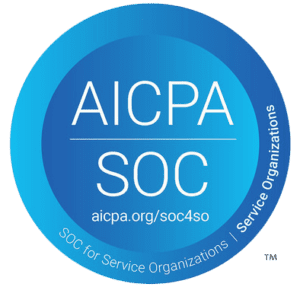Today’s advisors are busier than ever. Balancing time between serving existing clients, growing their firm, and still trying to maintain time for a personal life remains extremely challenging. In recent studies, advisors self-assessed that they spend 43 hours overall a week managing their firm. However, when advisors were asked to estimate weekly time spent on each of the activities they spend running their firm, and those numbers were then totaled, their total weekly hours invested actually stacked up to over 53.
This disparity indicates the average advisor is unaware just how much time they are spending on a weekly basis, and how re-allocating that time could yield greater results for their firm. In fact, a 2014 study found that only 13% of advisors feel in complete control of their time. Advisors that take charge of their time and introduce opportunities to streamline are not only more productive, but also run more lucrative and sustainable firms.
In this post, we’ll explore some of the largest time-sucks advisors experience and present actionable strategies to evolve these activities from time-wasters to value-add or eliminate them entirely, earning precious time back in your day.
1. Quarterly Meetings with All Clients
Many advisors have regular quarterly meetings with clients that would not be considered “top-tier.” These clients are long-standing, unlikely to work with a different advisor, yet not proactive about providing referrals. These “B” or “C” clients can end up preoccupying much of an otherwise-productive advisor’s time if they’re not managing them well.
Start by categorizing clients by those that are “As,” and need more hand-holding, attention to detail, and a greater level of service, and make sure to include the biggest advocates in your client base as well. Plan on continuing regular quarterly meetings with those key clients. However, for clients that don’t make it into the top tier, consider scaling quarterly meetings back to annual, or bi-annual. Another option proactive advisors are leveraging is hosting informative quarterly group webinars for lower-tier clients, or proactively sending out a consistent and tailored set of information every month.
Being proactive about reducing time spent on client meetings is crucial for advisors that aim to become high-performing.
2. Unproductive Prospecting Activities
Some advisors attend a multitude of networking events and also spend a great deal of time cold-calling to build their book of business. Both of these activities can eat into precious time, and also often lack fruitful outcomes. While business development activities are crucial to any advisor’s success, unfocused activities like open networking or blind cold-calling are not a great use of time.
Instead, advisors are encouraged to be highly selective about their networking engagements and strive to make those touchpoints as impactful as possible. Additionally, time previously spent cold-calling can be better invested into asking happy clients for warm referrals or building strong partnerships with other professional service providers, like CPAs and estate planning attorneys, that can make referrals from their books of business.
3. Face-to-Face Meetings
In general, a large majority of advisors are still doing prospecting meetings face-to-face. These prospecting meetings can be a huge drain on precious time, as meeting preparation and travel to and from the location can quickly eat up half a day (or more).
Increasingly, advisors that succeed in taking charge of their time are now completing initial prospect meetings via video chat or conference call. While some advisors might fear that without the face-to-face touch, they will not bring-on as many new clients. However, some early evidence indicates the contrary. In one case, an advisor switched to video chat meetings as their standard initial step with prospects, and ended up getting 33% more potential prospects to take him up on the initial meeting. He also saw no change in his sales conversion rates, which means switching to digital meetings allowed him to generate more prospects, therefore closing more business.
4. Manual Social Marketing
In today’s day-and-age, it’s crucial for advisors to have a strong presence online. Clients are looking for an advisor that presents strong thought-leadership and a modern approach. However, the time advisors spend on marketing themselves and being relevant online can quickly become out-of-hand if not managed proactively.
In the case of social media, maintaining an active presence can be demanding. In order to manage the time invested in social media, many advisors are beginning to leverage social media automation. Social media automation platforms such as Buffer or Hootsuite, allow advisors an easy interface to schedule their marketing messaging in-bulk. With these technologies, your social media becomes “set it and forget,” so you can get back to serving your clients. There are also new software options, like Gremlin Social, entering the market for social marketing automation that are tailored to financial services firms and their unique compliance needs.
5. Dated or Convoluted Reporting Software
In years past advisor technology focused on offering more and more robust and customized client reporting functionality. However, somewhere along the way, these tech platforms lost sight of the fact that advisor technology is supposed to simplify, not add complexity. The overall complexity of a client report often does little to increase client satisfaction. Typically, these legacy tools actually increase the time it takes advisors to prepare for client meetings or touchpoints, without actually improving client relationships substantially.
At BridgeFT, we focus our portfolio management software, Atlas’, reporting capabilities on creating simple, actionable reports that spark better conversations with clients. Additionally, we surface and deliver the most important activity and insights from your client base to you right on your dashboard. At the end of the day, advisor/client relationships aren’t about how great or big your reports look, they’re about the coaching conversations you’re having with clients. Advisors that are looking to take charge of their time should ditch overly-complex, time-consuming tools for efficient tech that offers deeper client insights.
6. Excel Spreadsheets
Market research conducted by BridgeFT found that more than 20% of advisors are still using Excel spreadsheet as their sole portfolio management tool. This figure is alarming as there are many superior solutions on the market that help advisors manage their day-to-day work with a much greater level of efficiency and ease than Excel. Advisors that still find themselves spending several hours a week in Excel are behind-the-times in terms of advisor technology and should seriously consider getting on a more proactive solution to reduce time spent on portfolio management-related tasks.
7. Back Office & Administrative Tasks
The average advisor spends over 50% of their time on daily tasks related to managing their clients. These back-office client-servicing type tasks are crucial, but can take away valuable time that could be used for interactive client touchpoints or new-business generating activities. The tasks often include client servicing, meeting preparation, analysis, and more. Advisors that are not leveraging technology to automate and streamline these time-consuming tasks are draining time that could be spent on more profitable activities.
As an advisor, your time is best spent coaching clients on their financial position, building strong relationships, and growing your business. Leveraging technology to automate back-office tasks not only frees up more time for advisors to work on other tasks, but also allows advisors to provide a higher level of service to their clients. When advisors spend more time hands-on with clients, rather than doing behind-the-scenes admin work, they’re able to open up new potential growth paths for their firm. This could be moving upstream, demanding higher fees, and/or working with more affluent clients.
Advisors must harness the power of automation if they want to operate profitable, sustainable firms in the long-term.
8. Reactive Client Communications
When there are shifts in the market, clients that don’t have a good deal of visibility into their financial position will undoubtedly flood their advisor with questions and demands. This can create a large time constraint on advisors, particularly in times of market turbulence.
However, advisors that adopt a more proactive than reactive client communications style can avoid large influxes of client concerns due to market shifts. At Bridge, our practice management software allows advisors to send regularly-scheduled, personalized updates to their clients. These frequent, valuable updates will keep clients informed, so during market shifts, they already feel they know what’s been going on with their financial plan, and they know their advisor is being proactive.
Key Takeaways
As an advisor, your most valuable asset is your time and how you invest it into managing and growing your firm. The highest-performing advisors are those that take complete control of their time, eliminate time-wasters, use focused business development and marketing tasks, integrate back-office automation, leverage modern advisor tech, and adopt a proactive client communications style.
At Bridge, we help advisors run a better practice with technology that increases efficiency and enables stronger advisor relationships. Learn more about Bridge’s practice management software, Atlas.


